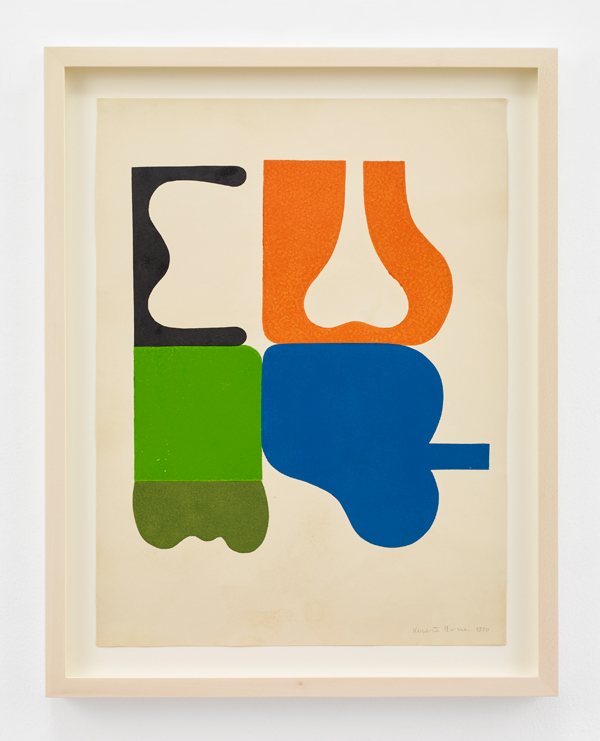Ilona Keseru's Abstract Works Teem with Organic Sensuality
Undulating lines, meandering colours and the crackle of an electric current in the work of the Hungarian artist
Undulating lines, meandering colours and the crackle of an electric current in the work of the Hungarian artist

Born in Pécs, Hungary, in 1933, the artist Ilona Keserü came of age at a time when the country was firmly shuttered politically and culturally from anything that lay beyond the Soviet sphere of influence. A student of the painter Ferenc Martyn, a founding member of the Hungarian European School, Keserü became well-versed in the language of European abstraction from a young age; yet, despite having studied fresco painting at the Academy of Fine Arts in Budapest, from where she graduated in 1958, her early works are a sombre affair, all inky blacks and muted, earthy browns.

A turning point came in 1962, when Keserü, the recipient of an Italian state scholarship, spent a year living in Rome. The octogenarian artist’s solo exhibition at Stephen Friedman Gallery, her first in London, is a select gathering of paintings, objects and works on paper, from the 1960s to the early ’80s, which came out of this period of artistic experimentation. They pulsate and crackle with the energy of an electric current, one that erupts from the artist’s body and into the surrounding ether. Autobiographical fragments from the time uncover a voracious appetite for knowledge, a desire to ingest the full vibrancy of life and encounters with art that the Italian city could offer: ‘Rome holds me in thrall.’

Even at their most abstract, the works exhibited here teem with a decidedly organic sensuality. For Keserü, the sensation of looking is always a haptic, bodily experience. Undulating lines – painted and appliquéd to surfaces or discernible in the shaped canvases themselves – are a reoccurring staple, redolent of the ebb and flow of waves or the wavelengths of light that determine and structure rules of perception. In fact, they’re a readymade form, taken from the idiosyncratic heart-shaped tombstones found in the cemetery of the small village of Balatonudvari, which Keserü encountered in 1967; they have taken root in her practice ever since. There they are in Double Form 3 (1972) in shades of raspberry-pink and coral, and delineated on the raw, embossed canvas, streaming across the support like a landscape and protruding from its surface. Or, again, in Forming Space (1981), a silkscreen print that takes flat planes of colour and, like a cut-out by Henri Matisse, plays with the optics of positive and negative space.

There are precedents for these formal choices in earlier works, too. Television (1965), the most directly figurative and subdued of these pieces, is a humble assemblage of oil paint, graphite, metal and lace on a wooden support. There’s nothing to see on this blank screen but the buzz of television static, communicated by a simple twisted, metal cord. The white lace that makes up the bottom of the composition harks back to a domestic setting of polished wood and doilies. Elsewhere, in In Memory of an Actress (1965), it cocoons the flesh-toned globular form of a neck and décolleté. This rounded shape re-appears, refined and simplified, in the cryptogrammic Project (Detail of Message) (1978) and as a trio of glass bottles (all 1970). If Marcel Duchamp had once bottled Parisian air as a souvenir (50 cc of Paris Air, 1919), Keserü’s mementoes are a visceral tangle of string and beads, at odds with the formal simplicity of their container. The potential clash of pure, rainbow colours in Space Taking Shape (1972) and Panneau Design 2 (1978) is tempered by the addition of tonal variations on brown and beige: the shades of human skin acting as a natural neutralizer.
The desire to grasp at any common denominator and make sense of this body of work is strong, but that’s the thing with Keserü: her forms and colours meander, undergo subtle shifts and mutations – teasing and taunting, always slipping away.
Main image: Ilona Keserü, 2018, installation view. Courtesy: the artist and Stephen Friedman Gallery, London
























